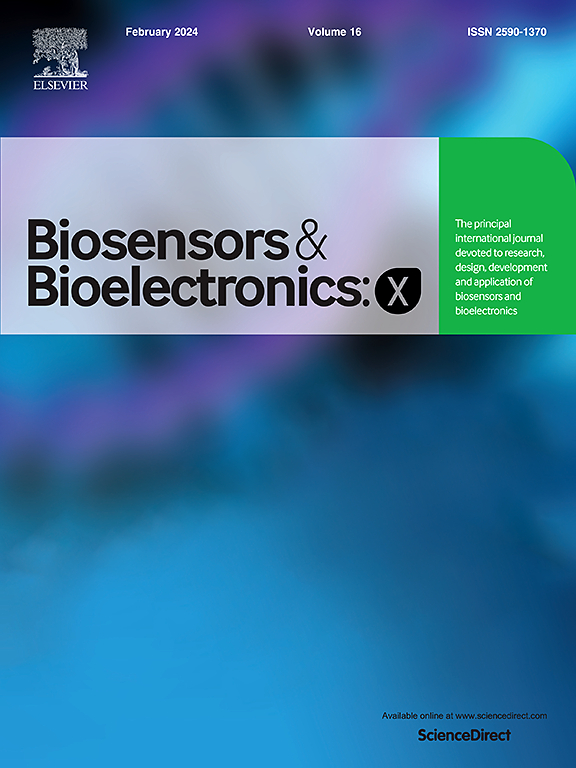尿中高危人乳头瘤病毒的三模式即时诊断
IF 10.61
Q3 Biochemistry, Genetics and Molecular Biology
引用次数: 0
摘要
人乳头瘤病毒(HPV)筛查对于宫颈癌的早期诊断和预防至关重要,但快速方便的HPV检测仍然具有挑战性,特别是在资源有限的地区。在此,我们开发了一种名为SSMG-LAMP的核酸检测方法,将环介导的等温扩增(LAMP)与工程DNA指示剂(SYBR Safe -孔雀石绿)相结合,用于尿中高危HPV毒株(HPV 16和18)的即时诊断。该分析可在45分钟内完成,包括DNA提取、SSMG-LAMP反应和信号读取,使用简单的便携式系统。该系统能够使用比色法、荧光法和电化学对DNA靶标进行三模式检测,并且可以检测低至10拷贝μL−1的HPV DNA。作为初步验证,我们使用SSMG-LAMP对16份临床尿液样本进行盲检,检测HPV 16和18,结果显示敏感性为80%,特异性高达96.2%,置信区间为95%。这种三模式HPV检测策略在低资源环境中具有即时宫颈癌筛查的潜力。本文章由计算机程序翻译,如有差异,请以英文原文为准。

Triple-mode point-of-care diagnostics for high-risk human papillomavirus in urine
Human papillomavirus (HPV) screening is crucial for early diagnosis and prevention of cervical cancer, yet fast and convenient HPV detection remains challenging, especially in resource-limited areas. Herein, we developed a nucleic acid test named SSMG-LAMP, which combined loop-mediated isothermal amplification (LAMP) with an engineered DNA indicator (SYBR Safe – Malachite Green) for the point-of-care diagnosis of high-risk HPV strains (HPV 16 and 18) in urine. The assay can be completed within 45 min, including DNA extraction, SSMG-LAMP reaction, and signal readout using a simple, portable system. This system enabled the triple-mode detection of DNA targets using colorimetry, fluorometry, and electrochemistry, and can detect as low as 10 copies μL−1 HPV DNA. As a preliminary validation, we used SSMG-LAMP for a blind test of 16 clinical urine samples to detect HPV 16 and 18, and results showed a sensitivity of >80 % and specificity of up to 96.2 %, with a 95 % confidence interval. This triple-mode HPV detection strategy holds potential for point-of-care cervical cancer screening in low-resource settings.
求助全文
通过发布文献求助,成功后即可免费获取论文全文。
去求助
来源期刊

Biosensors and Bioelectronics: X
Biochemistry, Genetics and Molecular Biology-Biophysics
CiteScore
4.60
自引率
0.00%
发文量
166
审稿时长
54 days
期刊介绍:
Biosensors and Bioelectronics: X, an open-access companion journal of Biosensors and Bioelectronics, boasts a 2020 Impact Factor of 10.61 (Journal Citation Reports, Clarivate Analytics 2021). Offering authors the opportunity to share their innovative work freely and globally, Biosensors and Bioelectronics: X aims to be a timely and permanent source of information. The journal publishes original research papers, review articles, communications, editorial highlights, perspectives, opinions, and commentaries at the intersection of technological advancements and high-impact applications. Manuscripts submitted to Biosensors and Bioelectronics: X are assessed based on originality and innovation in technology development or applications, aligning with the journal's goal to cater to a broad audience interested in this dynamic field.
 求助内容:
求助内容: 应助结果提醒方式:
应助结果提醒方式:


